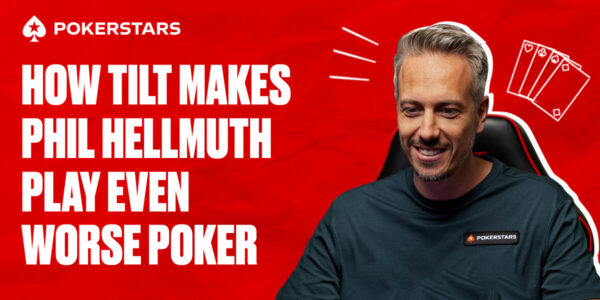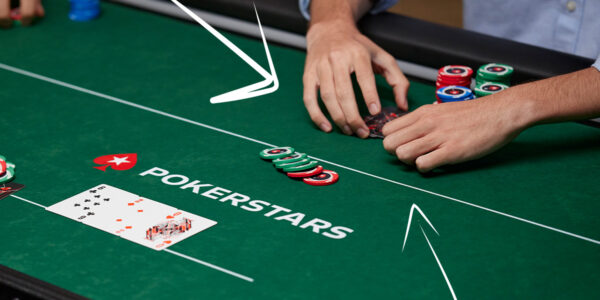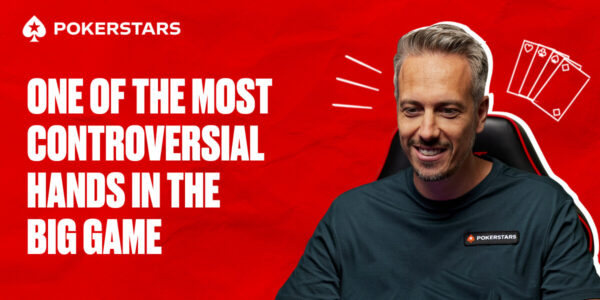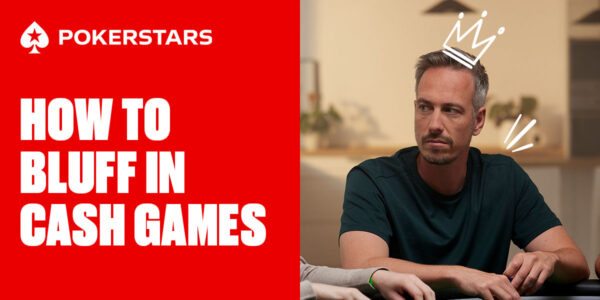The Game Theory of Board Texture: Part 4 – High Monotone Flops
Monotone flops are ones containing three of the same suit. Today, we shall bust another commonly held belief among beginning players. If you go to a poker room, stand next to the $1/$2 cash tables and listen to the table chat surrounding that monotone flop that just came down, the most frequently distributed ‘wisdom’ from the amateur players will most likely revolve around betting to charge the flush draws and betting big. Humans are intrinsically drawn to preventing bad things which could happen. Such a habit is evolutionarily sensible because we can prevent disasters yet to occur but cannot turn back time to stop things that have already gone awry. It is therefore instinctual on a three-flush board to focus on the draw getting there in the future instead of the chance that your opponent has already flopped a flush.
The Wettest of Flops – KhQh9h
On this flop, one pair is a fairly unexceptional hand. Having A♣ A♦ gives you a modest to decent chance of having a hand good enough to win this pot by the river, but in our classic Button (BU) vs. Big Blind (BB) confrontation, the BU only has 64% equity against the BB’s range with this holding. Note that when the BU bets one third of the pot and BB calls, this equity will decrease further dropping to 55% as BB’s range tightens – a thin value bet at best.
The demise of AA on this board into a marginal hand that can barely value bet illustrates a very key point about nut advantage – the BU has hardly any here. The powerhouse big pairs that he exclusively wielded pre-flop have been turned into average holdings. The out of position player holds so many straights, flushes, and flush draws here that one pair is just not going to cut it after BU has built a big pot and gotten called. Therefore, using big bets on this flop is very misguided. The optimal strategy is to use almost exclusively small bets here as the BU player because the nut advantage has been totally neutralised. Both players’ ranges contain flushes and straights – and plenty of them.
The ‘Charge the Draws’ Fallacy
As we noted already, unskilled poker players tend to obsess over what might change, neglecting in the process, what already is. The $1/$2 card room shrieks out cries of ‘charge the flush draw’. You will almost never come across an opponent at these stakes who appreciates the uselessness of betting big on this board and the following fundamental truth of bet-sizing in no limit holdem:
When Villain’s range contains lots of nutted hands you want to keep your sizing small.
The beginner has some rigid idea about made hands needing to protect themselves against unmade hands, but this is an oversimplified and primitive way to view hand strength. The factor which truly governs how often a hand wins is its equity, not whether it is technically ahead or behind right now. A♦ A♣ has 53% equity vs. A♥ J♠ on K♥ Q♥ 9♥ and because of this you can technically assert that it is currently the best hand. The problem is that such a black and white definition is highly misleading. When you make a massive bet with this hand and Villain calls with the flush draw and gutshot, you make a very thin value bet, gaining slightly due to investing a lot of money as a tiny favourite. That is, assuming Villain doesn’t turn his hand into a bluff and raise you off your flimsy hopeless one pair!
When we see things in this light, big betting with AA is not even terribly good against the very draw you are attempting to ‘charge.’ Now what happens if Villain is actually holding a hand like A♥ 3♥ ? You are drawing practically dead. When you build big pots, you isolate yourself against a higher concentration of hands like these.
Bet small when you do not have a nut advantage. It is the only way you can get away with betting marginal strength hands.
‘Charging the draws’ is indeed an utterly nonsensical expression in these situations.
How to Construct a Betting Range on Monotone Flops
Okay, so our sizing is going to be no more than 33% pot here, but which hands should we bet? Here is the recommended range. Note that the big bet option isn’t taken into consideration this time due to how infrequently we would use it. Once again, pink is bet 33% pot and green is check, and the flop is K♥ Q♥ 9♥ .


As you can see, this betting strategy is polarised. We are betting one third pot with mainly value hands and bluffs and doing quite a bit of checking. The fairly low 47% betting frequency is to be expected on a flop where the BB can flop a lot of powerful hands. Holdings like one pair are checking at a high frequency due to being very mediocre here. They are the equivalent of A8o on a dry flop like 662r.
Our main value bets here are two pair plus but even a two-pair holding like KQ is far from mighty on this flop and is allowed to mix check and bet. Most nut flushes are pure bets (meaning that they are always bet). Exhibit A:


But ones that block Villain’s continuing range to a bet are sometimes choosing to check and play like bluff catchers. Exhibit B:


When we hold the deuce of hearts, Villain can call with off-suit hands containing the Jack, but when we hold the Jack, he will almost never have an off-suit hand containing the deuce. This is an important teaching point.
Meanwhile, we are also allowed to mix checks into our strategy with some weaker flushes which can bluff catch very successfully and will not be doing amazingly if all the money goes in. Exhibit C:


Checking such a hand can feel alien to game theory newcomers, but this holding hand is actually only mediumly strong on this particular flop. We can do some value betting, but we are far from nutted and block many of the one-heart hands that will call our bets. Our bluffing range on this sort of texture contains a lot of gutshot straight draws like this one:


But believe it or not, we are also allowed to make some pure bluffs here. The idea is that our bluff candidates have such low equity anyway that if we do not bet with some trash then we will be underbluffing – meaning betting too infrequently with a bluff so as to apply sufficient pressure to our opponent’s medium strength hands, which we need to make indifferent between calling our bets and folding to them. Would you believe that this puny hand is allowed to bluff at a decent frequency?


GTO can be very counterintuitive at first.
Finally, some people refer to a combo like this as a bluff here:


But such a hand is clearly better than this insulting definition implies – it has around 50% equity against a lot of Villain’s one pair calling range. Hardly a bluff at all. Therefore, if we commit the cardinal sin of only bluffing with high equity hands – and most of your opponents are guilty of this very sin – we end up betting an extremely high equity range that comes nowhere near making Villain indifferent to bluff catching. In this case, he could simply fold all of his bluff catchers.
You have to bet with nothing sometimes. Being too strict leads to not bluffing often enough. This strategy makes you very easy to play against and loses you EV when you have a good hand.
Conclusion
Monotone boards are plain weird when we first get our teeth into the recommend theoretical approach. Stick with this series of articles, no matter how much it shakes up the conventional wisdom you have been relying on so far.














